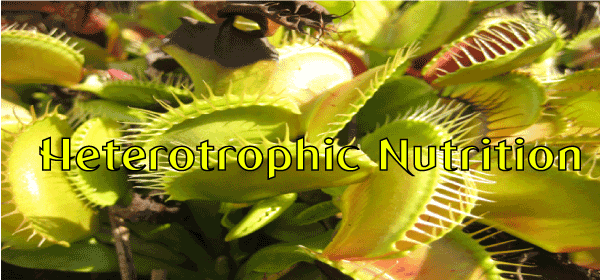Heterotrophic NutritionThe process of getting food necessary to obtain energy to carry out life functions is known as nutrition. Autotrophic and heterotrophic feeding are the two primary forms of nutrition. An animal or plant that feeds on the energy and nutrients of other animals and plants or when a creature derives its sustenance from other living organisms is known as heterotrophic nutrition. What is Heterotrophic nutrition?
Heterotrophic nutrition is defined as the reliance on other organisms for survival by certain species. Heterotrophs are organisms that cannot produce their own food and must rely on other species. Except for green plants, all eukaryotes are unable to produce their own sustenance and must rely on other creatures. Heterotrophic nutrition is another name for this type of eating. Heterotrophic organisms include 'animals', 'fungus', and 'bacteria'. "Heterotrophic feeding" is a way to get compound, ready to consume meals. Types of Heterotrophic NutritionThe several types of heterotrophic feeding methods and the species that fit within them are detailed below. In organisms, many forms of heterotrophic nutrition occur, which may be classified into the following groups. 
HeterotrophsAn organism that gets its vitality and nutrition from other plants or animals is known as a heterotroph. The name is derived from the Greek terms hetero, which means "other," and trophe, which means "nutrition." Heterotrophic nourishment denotes to a sort of sustenance in which entities depend on other genera for nourishment. Green plants, on the other hand, are unable to produce their own sustenance. Heterotrophic organisms must consume all of the organic compounds they require to thrive. 'Consumers' is another term for heterotrophic organisms. Considering that they lack the ability to generate food, all primates and non-photosynthetic plants are characterized as heterotrophs. As a result, these creatures seek alternative food sources. From an ecological standpoint, heterotrophs are always intermediate or tertiary consumers in a food chain. Humans and other animals process organic, solid, or liquid food into energy. Fungi, for instance, bank on the decomposition of organic materials to survive. In principle, heterotrophs break down complicated foods into digestible components. Autotrophs and heterotrophs are two major classifications for organisms depending on how they receive energy and nutrients. Autotrophs are called producers because they can manufacture their own food using only basic ingredients and energy. Producers and other consumers are consumed by heterotrophic creatures such as dogs, birds, fish, and people are heterotrophs.
Next TopicTypes of Heterotrophic Nutrition
|
 For Videos Join Our Youtube Channel: Join Now
For Videos Join Our Youtube Channel: Join Now
Feedback
- Send your Feedback to [email protected]
Help Others, Please Share










